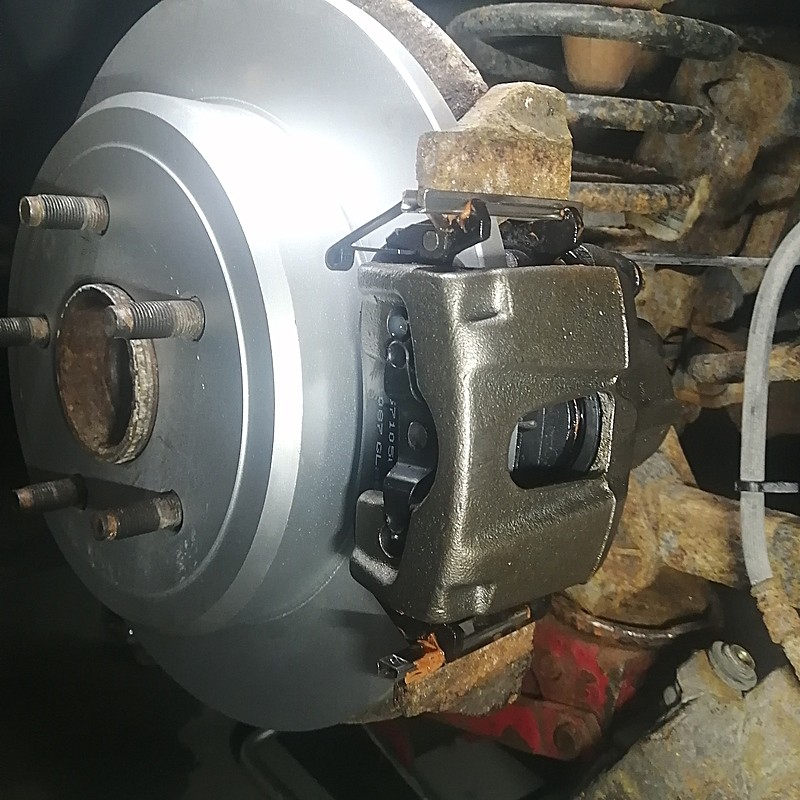How to inspect and service a seized brake caliper?
January 01, 2021Sticking or seizing caliper causes uneven wear of your pads and rotors and may significantly reduce your stopping power. A fully seized caliper locks up your pads, quickly causing them to fail and gauge your rotor. The following symptoms may indicate a failing caliper, calling out for a prompt brake inspection:
- Constant grinding sound
- Pulsating brake pedal, even when you are not stopping
- Car is pulling to one side, more noticeably during braking at highway speeds
- Overheating of the wheel rim
- Smoking brake pads
You would have to unbolt the caliper to check its freedom of movement and determine the root cause for seizing. However, you can do one quick check before disassembling the caliper. Get a flathead screwdriver wedged between the rotor and the pad, and then carefully pry against the brake pad. If the caliper is not completely seized, you will be able to push the caliper piston back and separate the pads.
Inspect the slider pins
Once the caliper assembly is taken off, you should first check for sticky/seized slider pins on the caliper bracket. Remove the protective rubber boots, clean the pins and the bores, and apply new lubrication. A seized pin would prevent the caliper from free floating and applying pressure on the outer pad. This would cause the inside pad to wear quicker than the outer pad, eventually wearing and gauging the inside rotor surface. In turn, the outer rotor surface would not be loaded and may start to rust and pitting, creating imbalance and warp-like pulsation.
Push back the caliper piston(s)
Try pushing back the piston using a caliper pusher tool (can also be done using a simple C-clamp). A seized piston would not move, and if that’s the case, you would either replace or rebuild the caliper. If the time is not pressing, you can look for a specialized shop that would rebuild or exchange your seized caliper. The rebuilt caliper would cost less than a brand new part.
Replace the flexible brake line
If the recently serviced or replaced caliper continues to stick and does not fully release, you may have to replace the flexible coupling line connecting to the caliper. These lines may deteriorate on the inside causing the lining to flake and block the brake fluid, preventing the required return flow. Note, that the flex lines may not show any exterior damage and pass your visual inspection.


